Oxford Ionics
Leading the race towards quantum computers
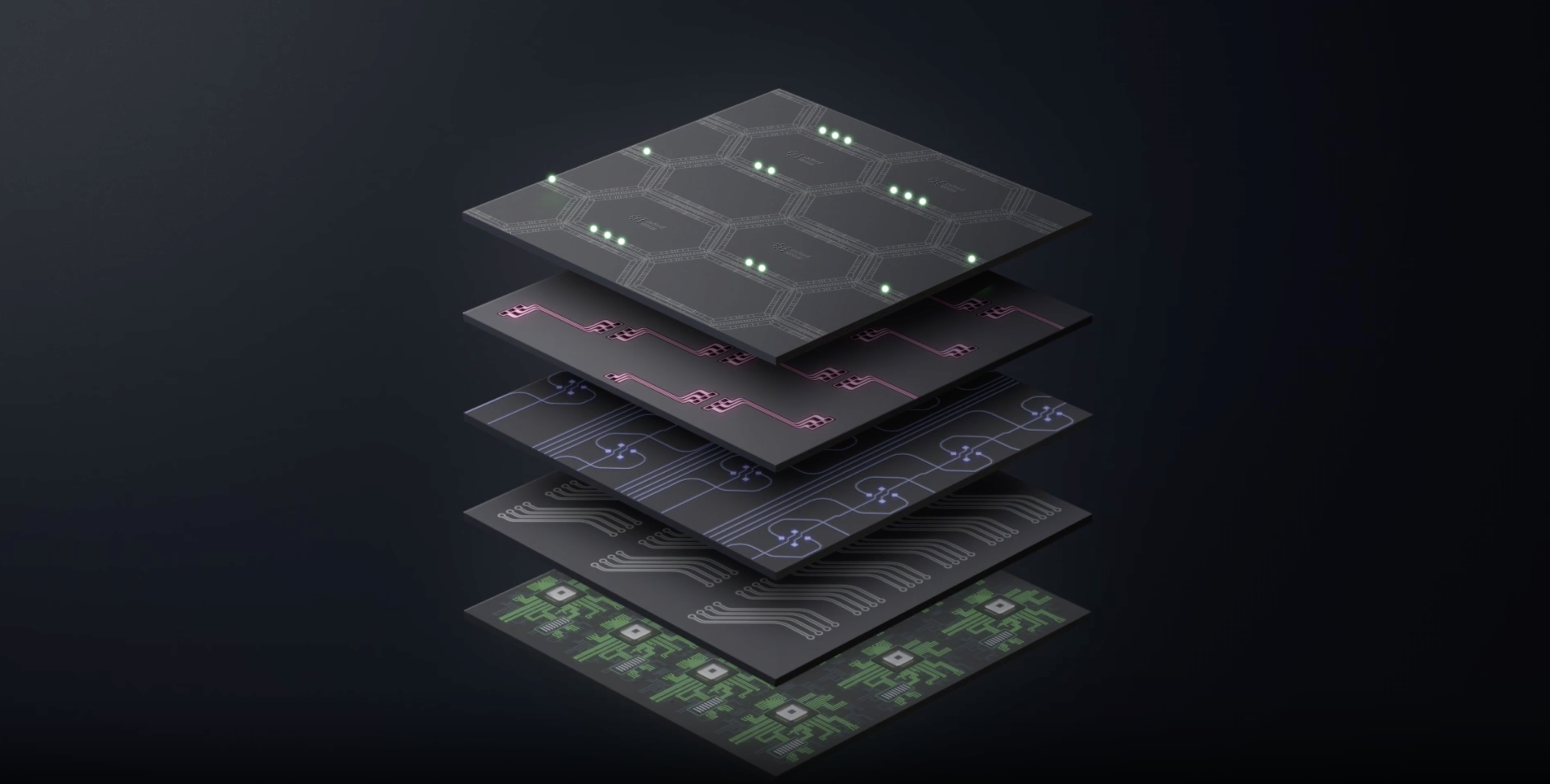
How Oxford Ionics is on a mission to build the world's most powerful quantum computers using pioneering trapped-ion technology developed at the University of Oxford.
‘We’re halfway through the marathon,’ says Dr Chris Ballance, co-founder and CEO of quantum computing spinout Oxford Ionics. ‘We’ve gone through the easy bit at the start and are now putting in the hard yards, but at the same time we can see that it’s going to be possible to reach the end.’
Ten years ago, when Chris submitted his DPhil thesis exploring how to increase the precision of quantum computing systems, the sound of the starter’s gun was still echoing through the air.
The decade since has seen huge leaps forward in the field. But first, a brief explainer.
Building Schrödinger’s cat
Quantum computing, unlike the classical computing used in our laptops and smartphones, functions according to the laws of quantum physics. Chris points to Schrödinger’s famous thought experiment: while we know that in real life a cat can only be dead or alive (just as traditional computer bits are either zero or one), the point of quantum computing – and the reason for its vast potential – is that its building blocks, known as qubits, can genuinely be in two states at once.
'In nature, only very small systems enjoy behaving according to the laws of quantum mechanics. As soon as you start building bigger systems, you have the difficulty of building Schrödinger’s cat atom by atom – and always keeping it both dead and alive.'
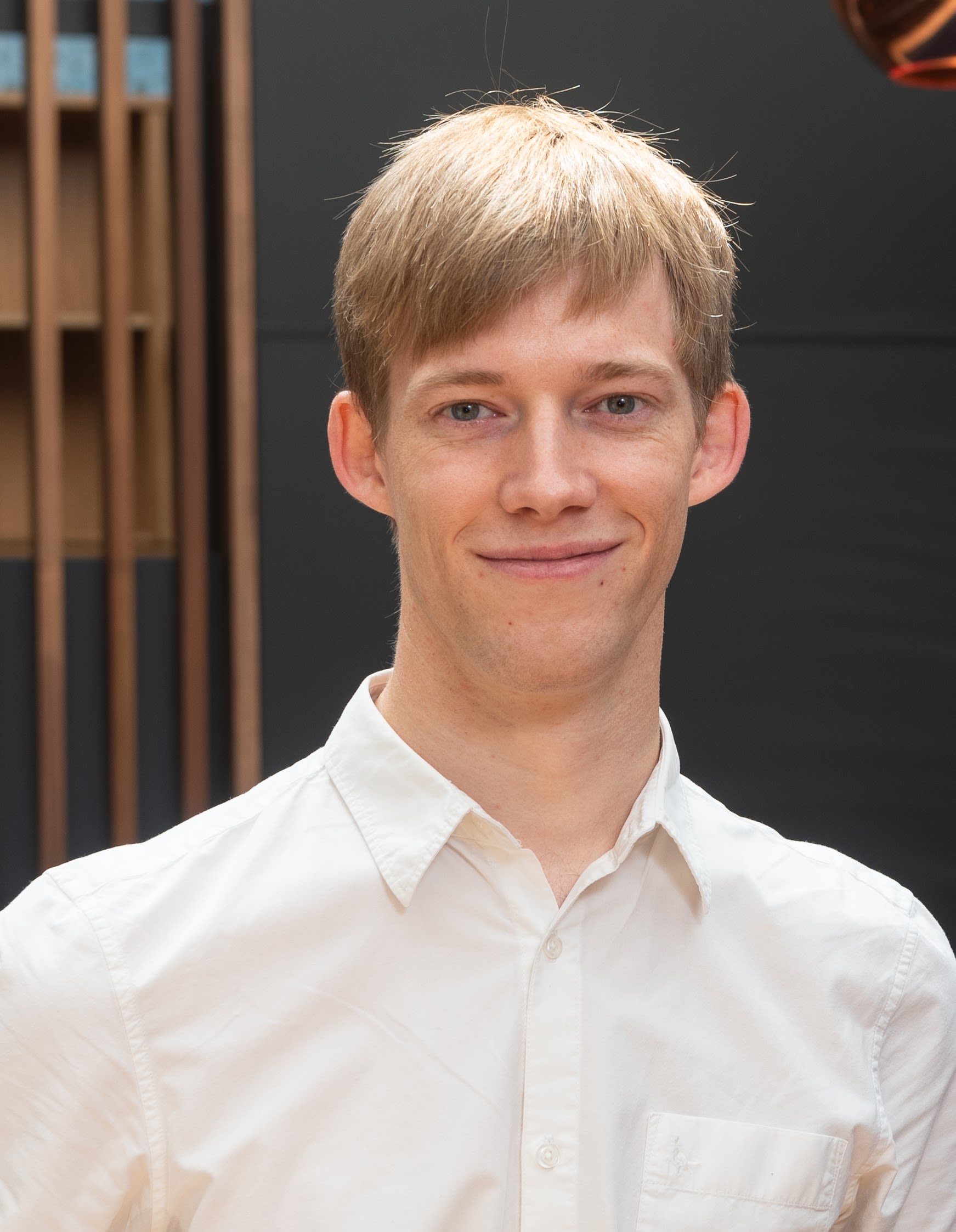
Dr Chris Ballance
Dr Chris Ballance
Thanks to this conceptually challenging physics, quantum computers have the potential to dwarf the processing power of today’s computers, able to deal with enormous amounts of information in impressively short order. An Oxford-specific analogy – oversimplified, no doubt – sends us to the Bodleian library: a classical computer, working with zeroes and ones, would have to look through each book in turn to find the hidden golden ticket, potentially taking thousands of years. An advanced quantum computer could simply open every book at once.
While speculating on technological developments is often a mug’s game, there are some clear applications here: materials production, battery optimisation, drug development, financial investment, and logistics could all benefit from the disruption and surge in processing speed offered by quantum computing. And, just as we went from “brick” cellphones to all-singing smartphones in only a few decades, advancements in quantum technology will doubtless reveal further uses in the years to come.
‘In two years’ time, I think we’ll be solving some pretty meaty challenges with quantum computers. And in five years’ time, we’ll routinely be doing things that are currently considered impossible.’
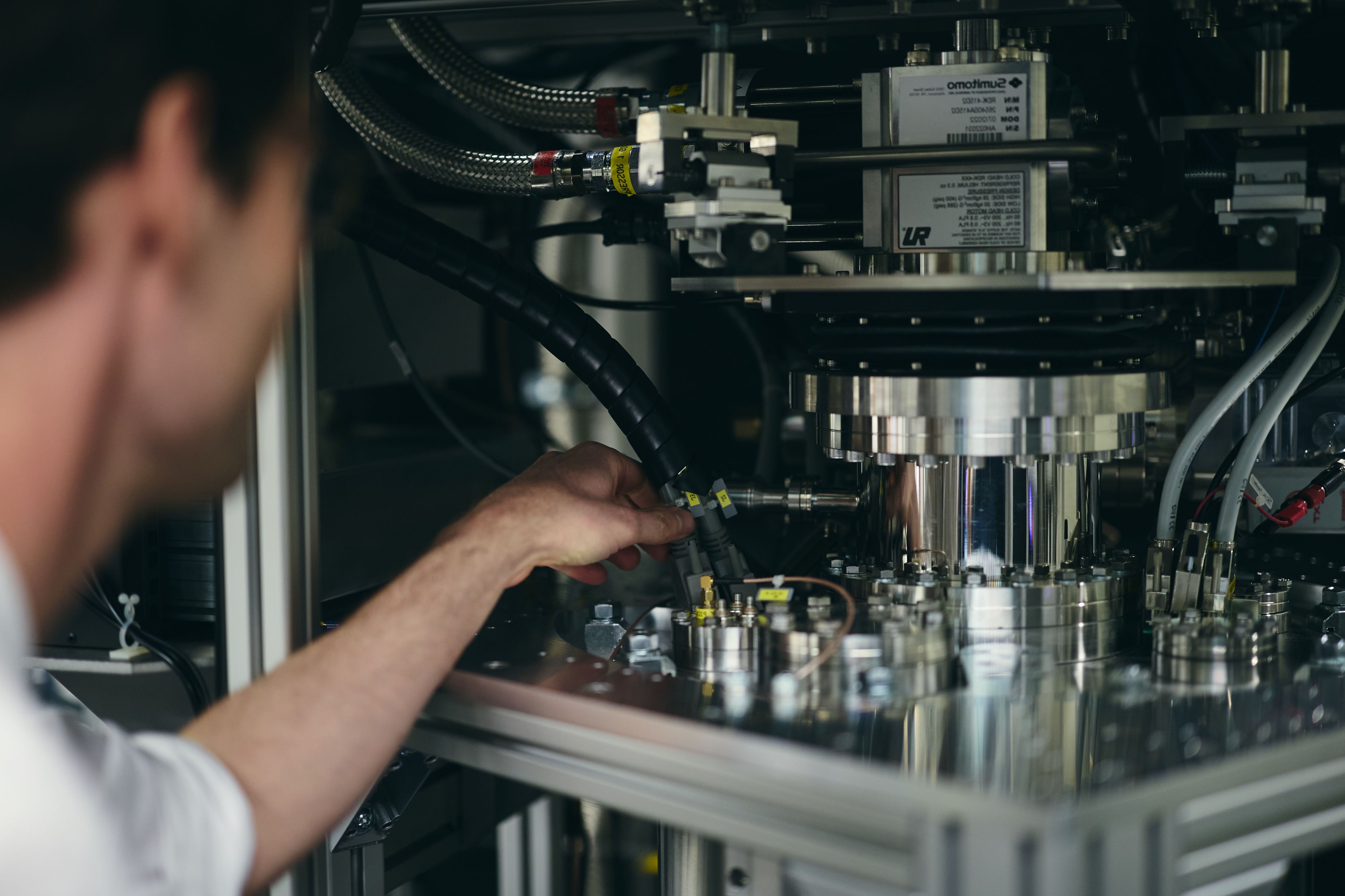
'The world's best qubits'
‘It all started in 2019,’ says Chris. ‘We raised our first significant funding round just as the pandemic was kicking off. We had to use this exotic thing called Docusign to complete the paperwork at short notice – due to the investors’ team being taken out by a strange flu – which felt very strange at the time.
'In 2019, we were just two founders: myself and Dr Tom Harty. Now, Oxford Ionics is a company of 55 employees, and we expect to grow to 80 by the end of this year.'
Chris and Tom met while completing their DPhils in Oxford University’s Department of Physics. They had both become convinced that of the various approaches to building a much-anticipated large-scale quantum computer, trapped ions offered the greatest potential to act as the qubits required to construct such a system.
As the name suggests, trapped ions – individual atoms with an electrical charge – are held in place by an electric field while they carry out a programmed task. They have a purity and a simplicity that makes them ideally suited to the delicate nature of quantum computing. The challenge, in basic terms, has been in scaling them up to reach a commercially and practically relevant number of qubits.
Among the Oxford Ionics team members working on this trapped-ion technology is quantum scientist Dr Amy Hughes, who was recruited after completing a doctorate at Oxford University.
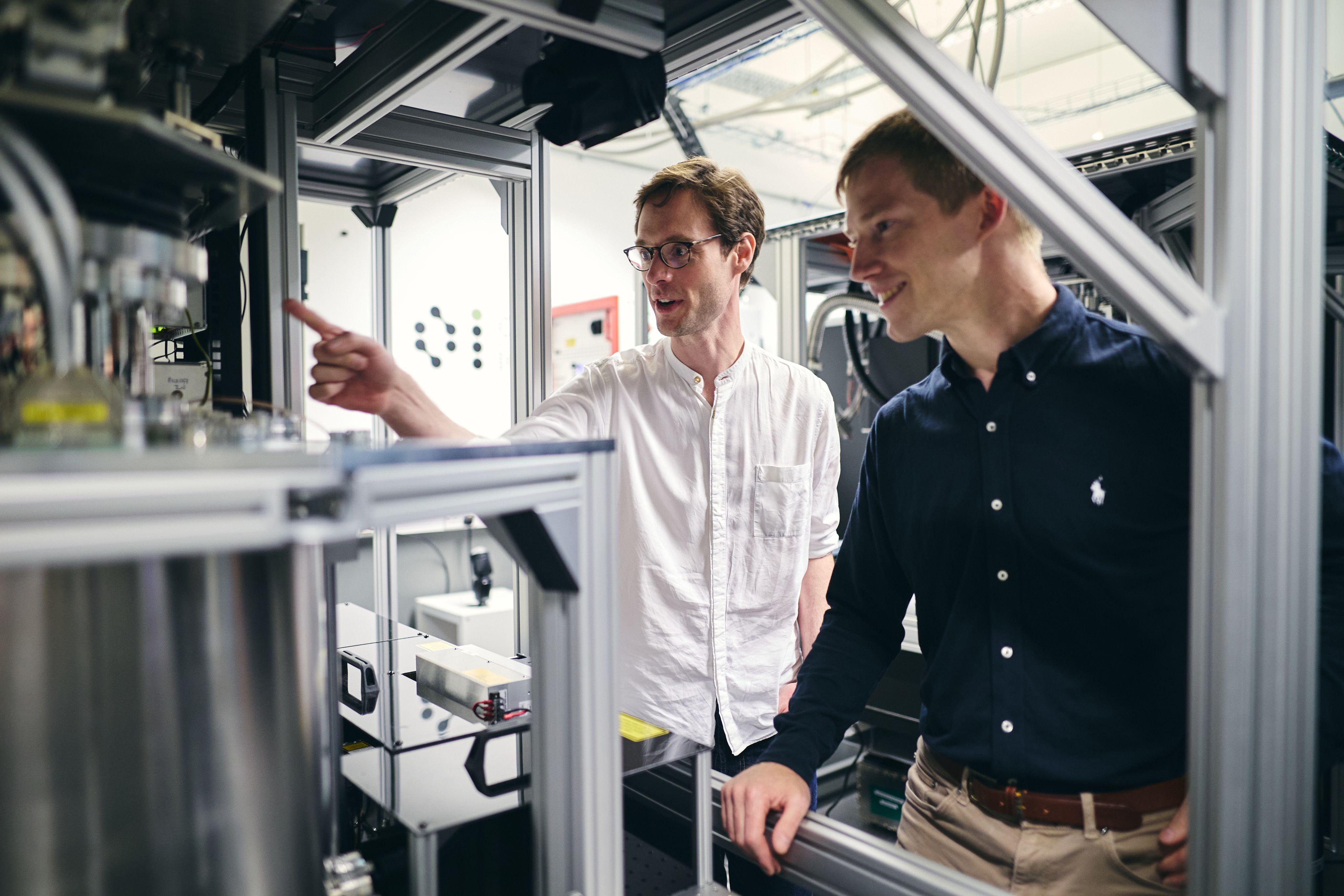
'Just over the course of my lifetime, trapped-ion quantum computing has progressed from theoretical ideas, to experimental setups at universities, to cutting-edge companies bringing this technology to life. Now I get to apply the technical knowledge and problem-solving skills I gained as a researcher to my daily work building powerful quantum computers at Oxford Ionics.'
'It’s an exciting and innovative environment where I’m able to collaborate with individuals operating at the top of their fields – not just in physics, but in a wide range of disciplines, from business to software engineering.'
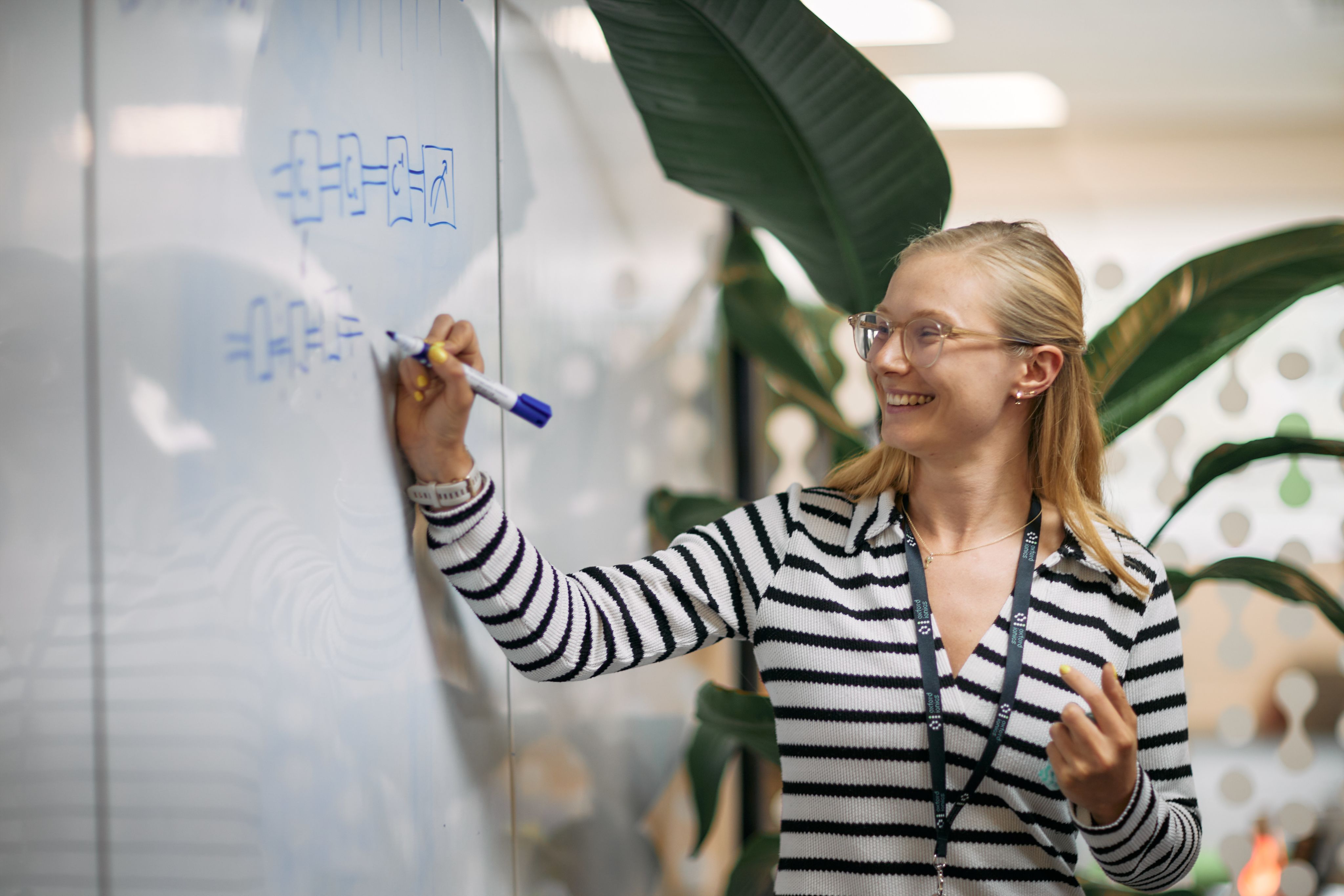
'We have shown over the last decade of research that we can control individual ionised atoms with incredible precision – far more precisely than any other technology in the world. These are the world’s best qubits.’
Chris adds: ‘What we do now in the company is to combine the best of atomic quantum control with standard semiconductor fabrication. Trapped ions are generally controlled with lasers, which add fundamental errors and are hard to integrate – ours are controlled using electronics integrated into silicon chips. These chips are built at a large semiconductor foundry alongside those we use in our laptops and mobile phones. The difference is that our chips control individual atoms for quantum computing. They’re doing this an order of magnitude better than any other system on the market.’
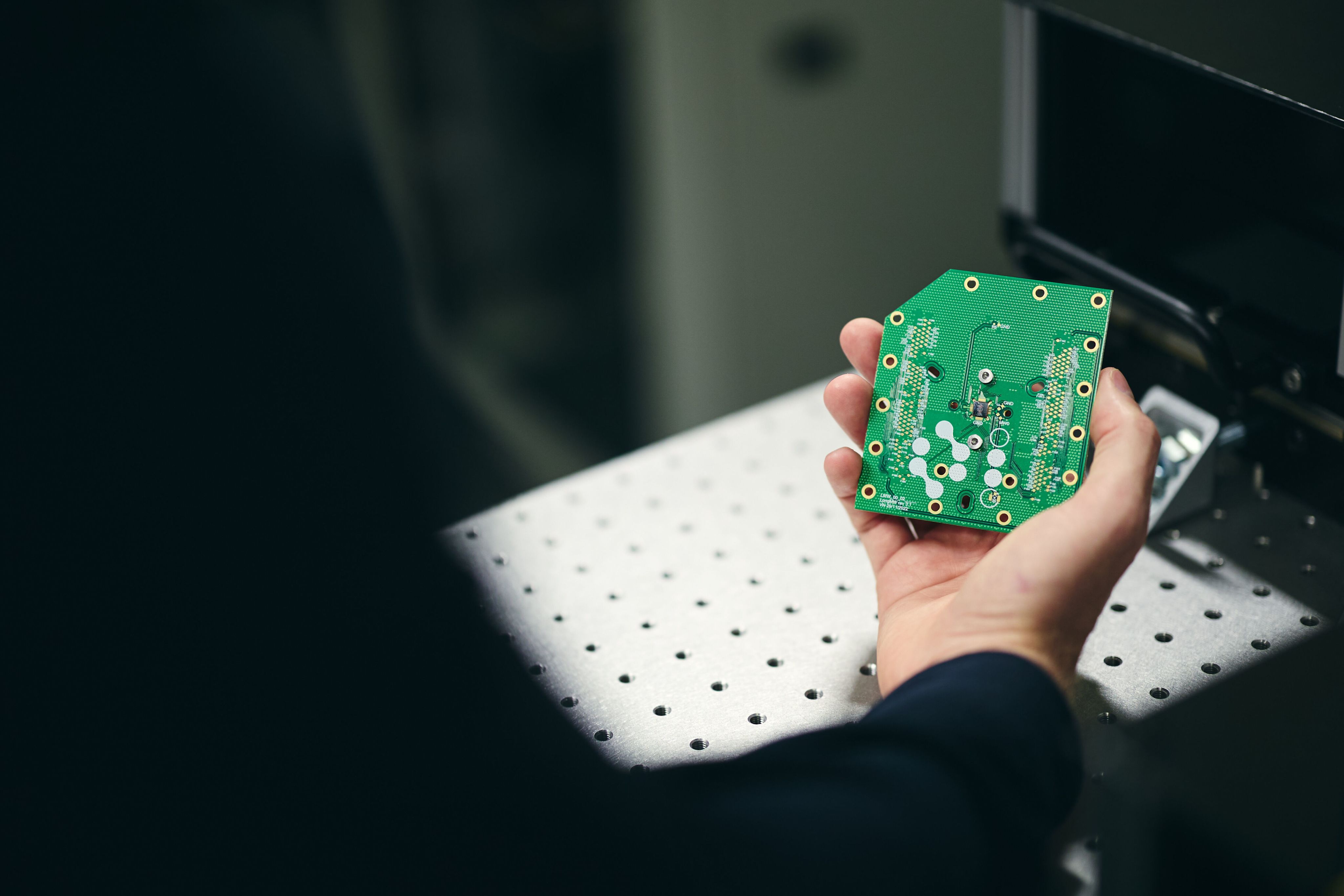
Size does (and doesn’t) matter
Earlier this year, Oxford Ionics announced it had won a £6m contract to supply a state-of-the-art quantum computer to the UK’s National Quantum Computing Centre (NQCC) in Harwell, Oxfordshire. Scientists at NQCC will use the computer, nicknamed “Quartet”, to carry out research and develop new applications.
Oxford Ionics’ success in this area can no doubt be put down to the consistent quality of its technology: in July, the company smashed the world record for qubit performance. ‘The new results mark a pivotal step forward in ion trap quantum computing and validate the scalability of the technology,’ says Dr Michael Cuthbert, Director of NQCC. ‘The reported one and two-qubit gate results outperform other players’ achievements to date, meaning error correction becomes achievable with minimal overheads. This performance underpins the proprietary architecture Oxford Ionics will deliver to the National Quantum Computing Centre as part of our Quantum Computing Testbed procurement, and we are really excited to see both how this will be deployed, and how we will be able to use these ultra-high-performance qubits for the development of algorithms and new applications.’
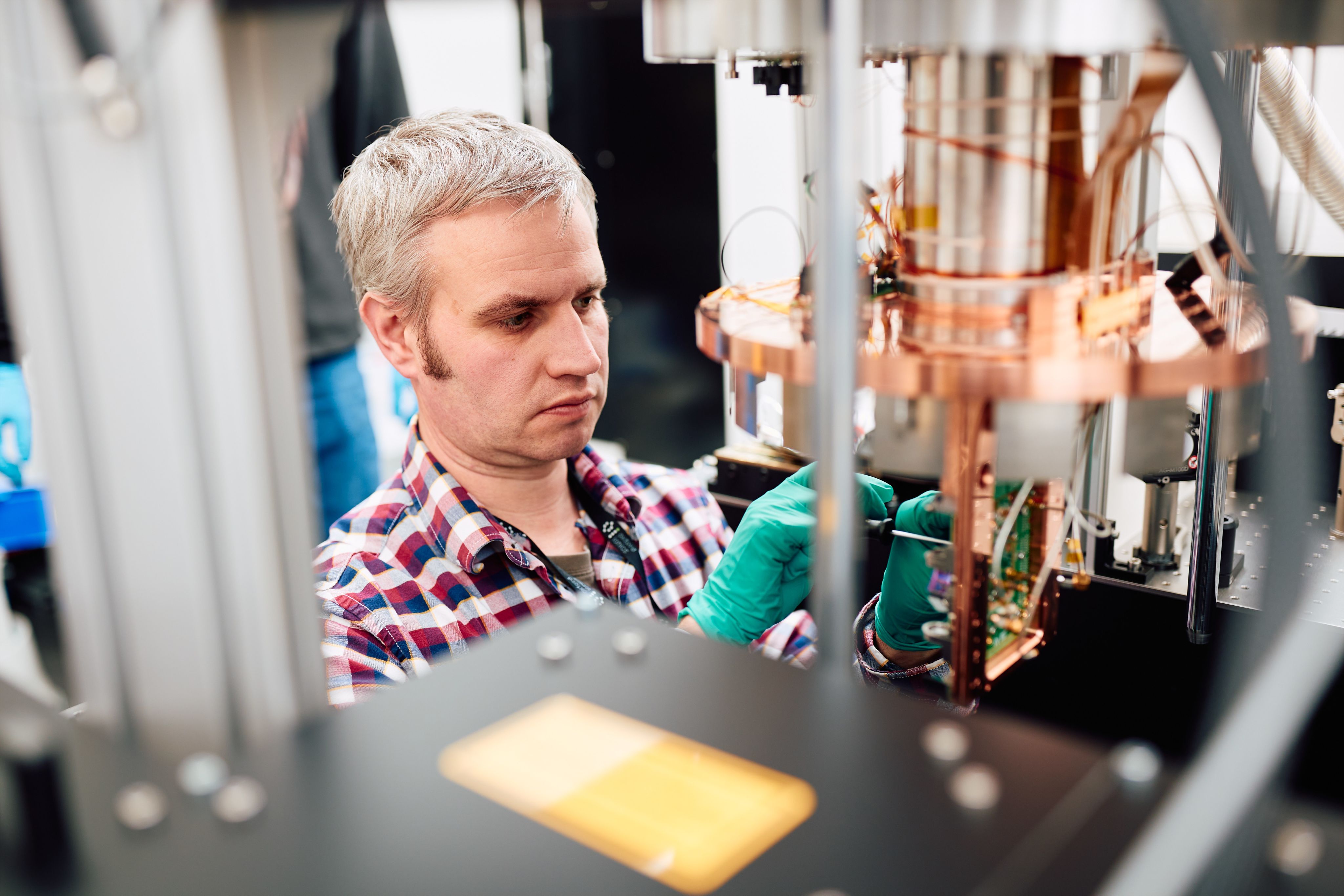
A technician installs a quantum processor into Oxford Ionics' world leading quantum computer. Image credit: Oxford Ionics.
A technician installs a quantum processor into Oxford Ionics' world leading quantum computer. Image credit: Oxford Ionics.
While there are further exciting collaborations in the pipeline (those remain under wraps), the company has been focusing largely on internal R&D. In 2023, Oxford Ionics raised £30m in a Series A funding round led by Oxford Science Enterprises and Braavos Investment Advisers to enable greater advancements in the scalability, integration, and performance of its technology. Oxford Ionics works with strategically selected partners, but only those who can, in Chris’s words, ‘get past the velvet rope’ and help take the technology and its applications to the next level.
‘At the moment our effort is going into building larger and larger quantum computers to get to this commercially viable scale as quickly as possible,’ says Chris. ‘When you get to about 100 qubits, you can start solving problems that can’t be solved in any other way.’ News stories every few months report a new record for number of qubits (over 1,000 at the last count). But, emphasises Chris, the most important element is in fact the accuracy, not the size: ‘Scott Aaronson, who is one of the leading lights in the field, puts it really well. He urges us to ignore the hype around qubits – the best way of judging progress in quantum computing is to look at the hardware error rate. Better hardware error rates are all we need to get us to useful quantum computers, and at Oxford Ionics we’re firm believers in this mantra.’
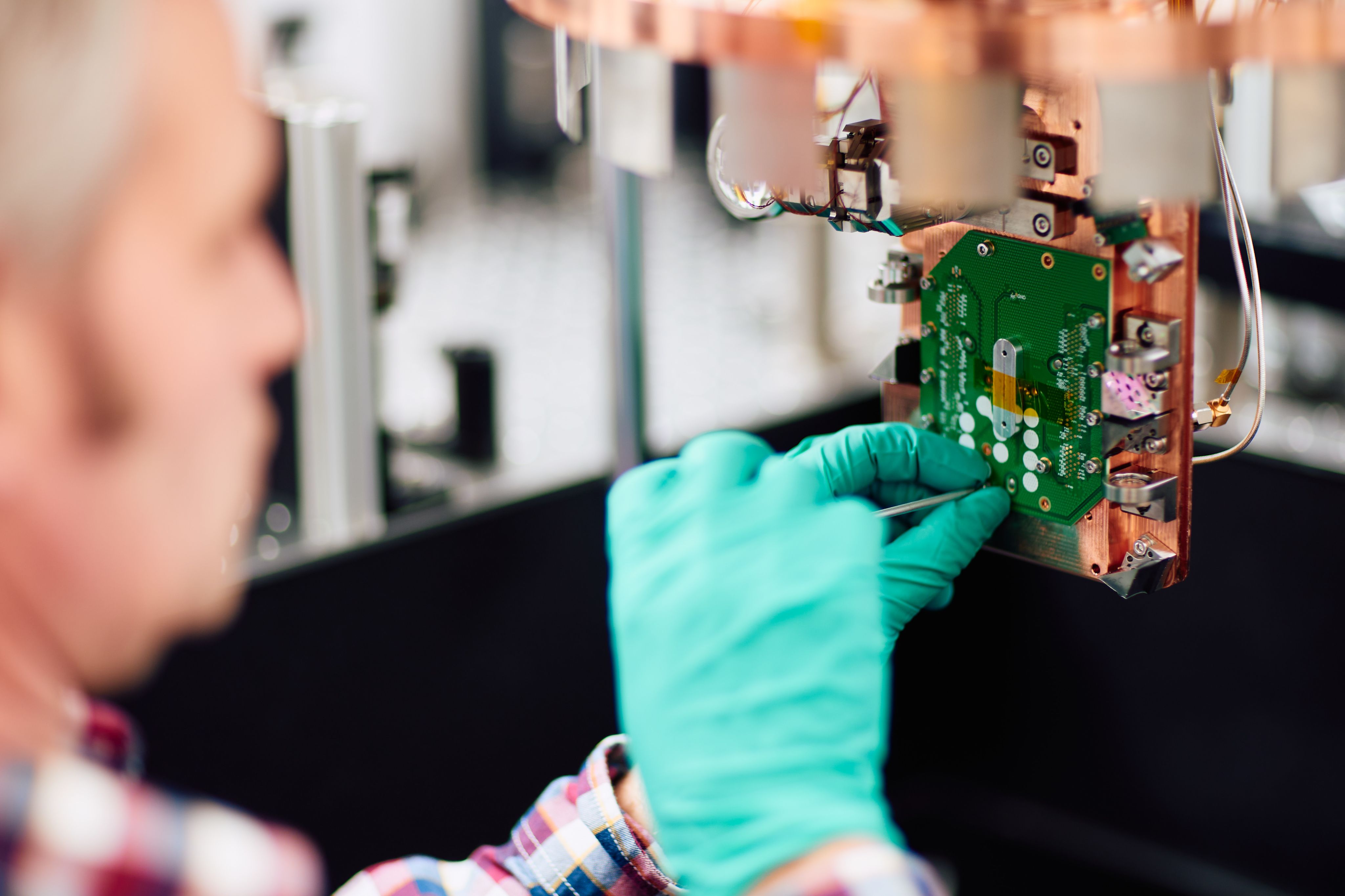
A step change in culture
Taking on the additional role of company CEO only a few years after becoming a university researcher would be daunting for many. But, drawing on his experiences of leading a multidisciplinary research lab, Chis, alongside co-founder Tom, has built up a highly ambitious and diverse team at Oxford Ionics. This includes not just scientists, theorists, and engineers, but also leaders in finance, operations, and marketing who have deep expertise in scaling fast-paced businesses.
‘The most exciting thing about running a company is not solving the problems in front of you. It’s when you realise that the smart, motivated people you work with have already identified and solved problems you wouldn’t even have considered. Where we are now would have been impossible to imagine even two or three years ago.’
When not travelling the world on Oxford Ionics business, Chris still finds time to lead a research group in Oxford’s Department of Physics, where he holds a UKRI Future Leaders Fellowship. He says: ‘What’s really nice is the strong alignment between the blue skies research we do at the University and the commercialisation we do in the company. Rather than being two separate things, there’s a harmonious pipeline in terms of nourishing the tender seedlings of longer-term ideas in the department – which Oxford Ionics wouldn’t have the time or resources to do – and growing on those ideas for refinement and deployment in the company.’
‘From founding the company five years ago there has been a complete step change in people’s attitudes towards research commercialisation. It’s gone from being a dirty word to something that’s viewed as having clear value both to the University and to the wider world. There is much better cooperation now, which means there are fewer blockers to getting things done and making a positive impact.’
Ten years ago, when Chris Ballance deposited his DPhil thesis in the Bodleian library, commentators cautioned that efforts to build a viable, useful quantum computer would be a marathon, not a sprint. The finishing line might not be in sight – but there is absolutely no sign of quantum computing hitting the wall.
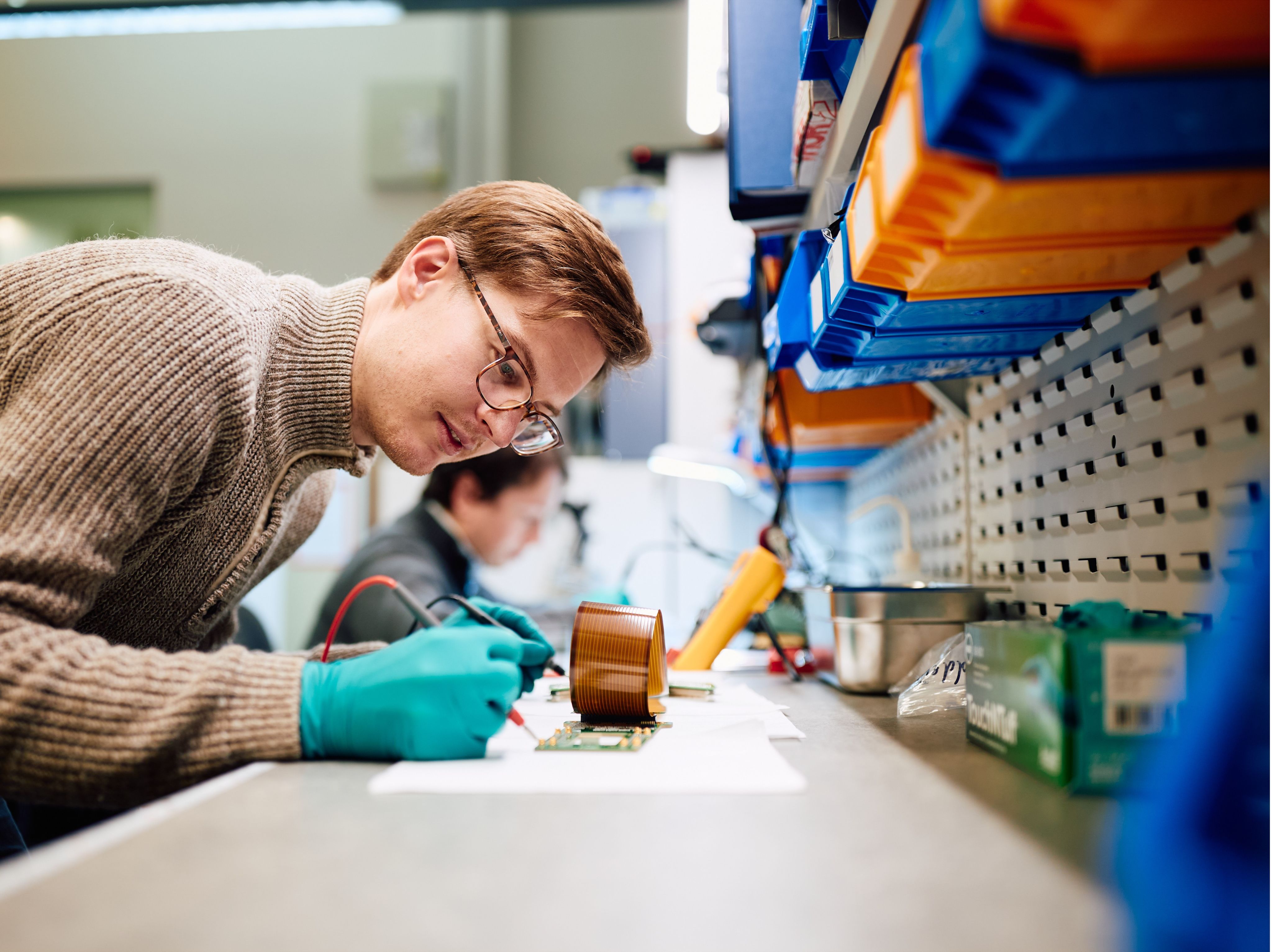
Read more about Oxford University's quantum spinouts here: 'Entering the quantum era.'
Inspired by our innovators?
Get in touch with collaboration@admin.ox.ac.uk or visit https://www.ox.ac.uk/research/engage-with-us to see how we could help you make a difference.


